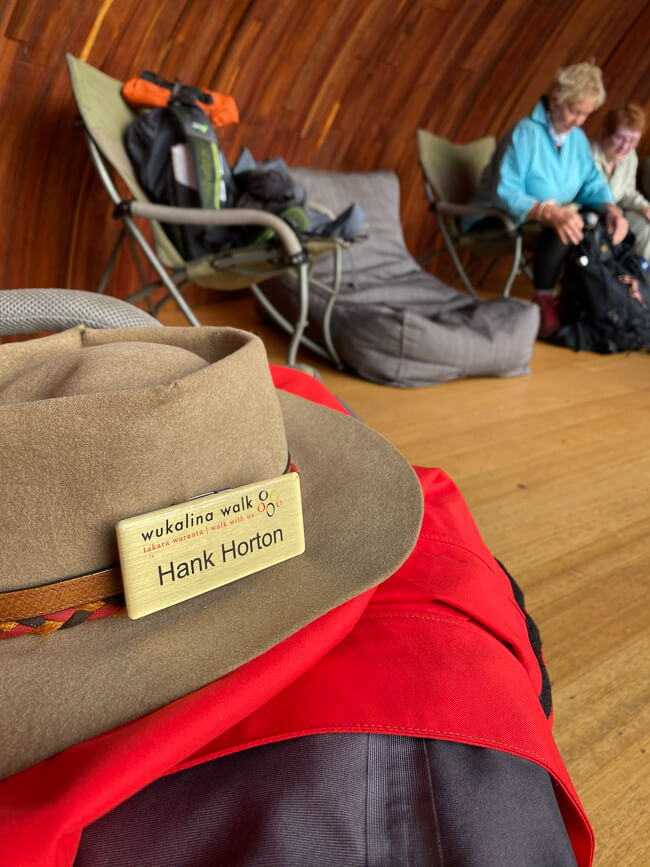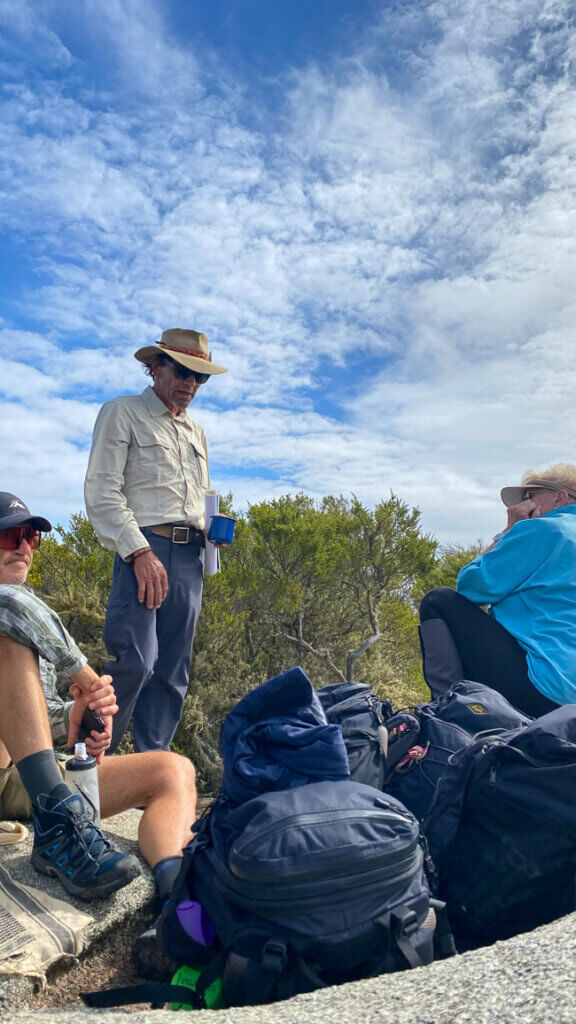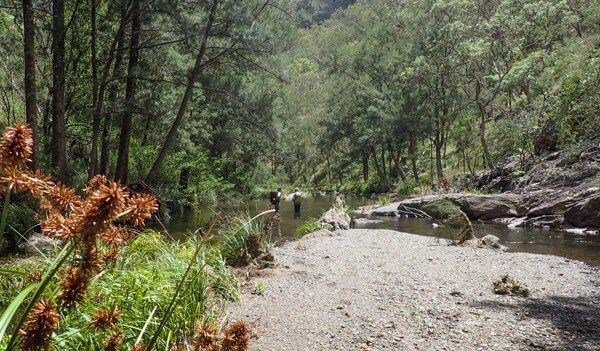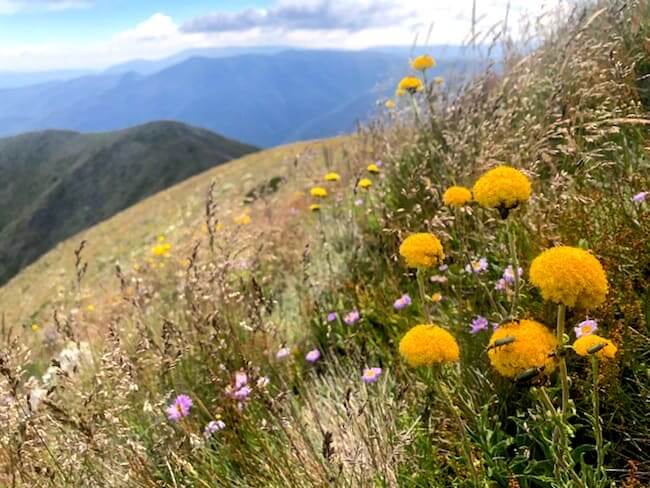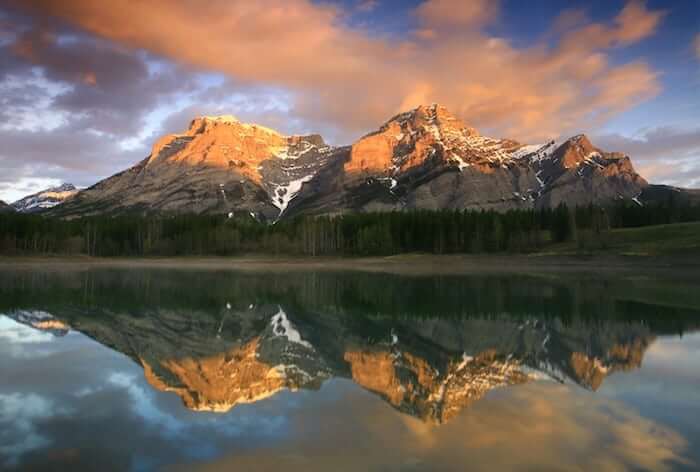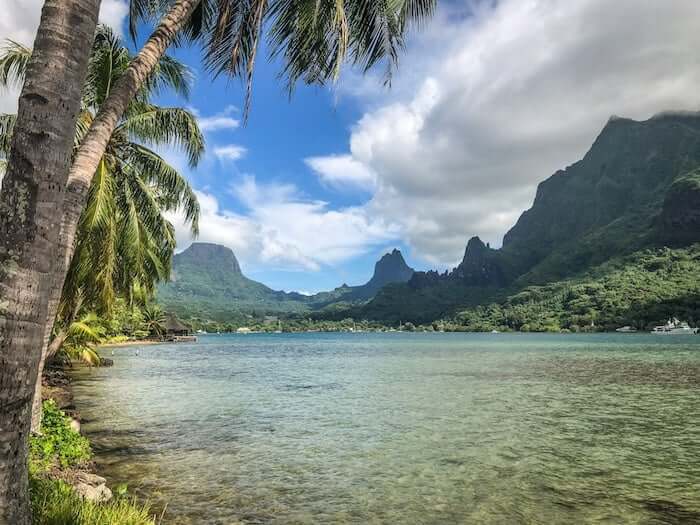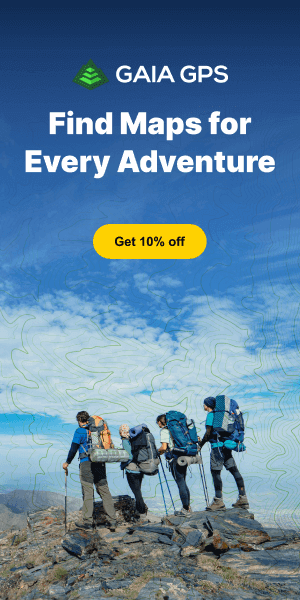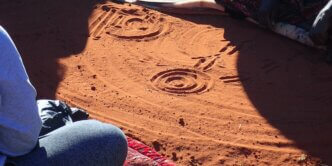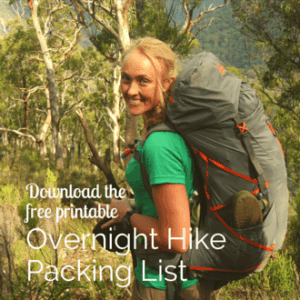- The custodians of wisdom
- The weight of the Elders
- The Wukalina Walk begins
- There are only 4 Aboriginal owned & operated multi-day tours in Australia
- Unlike other walking tour companies
- The trauma of being an aboriginal guide
- Capacity and training
- Gaining confidence
- Scrutiny and pressure
- Finances and skills
The custodians of wisdom
Imagine what would happen if the internet disappeared.
Without warning, the place we go to research, learn, connect, understand, ask questions and discover – all gone. No more searching for the best knots to tighten a tarp, shave three grams off your pack weight or find a pattern for DIY gaiters. No more places to go searching for the best recipe for dehydrated chilli con carne, to research the Franklin Dam or Pedder protests, to track down the passes of Narrowneck or the history of Myles Dunphy.
The knowledge of all things still exists, it is just that the conduit, the channel, has disappeared. It is now held within the minds of storytellers, of wise ones; of those who have walked, cooked, built, made, studied, protested, lived, loved, healed or journeyed before us.
How much more precious this knowledge now is, that we see how access can disappear in an instant. How much more revered are the holders of this wisdom. How treasured and privileged it would be to now sit with these clever ones and to hear from them.
This is how it felt to walk into the Aboriginal Elders of Tasmania Centre in a quiet suburban street, on the hilly part of Launceston, early on a March morning.
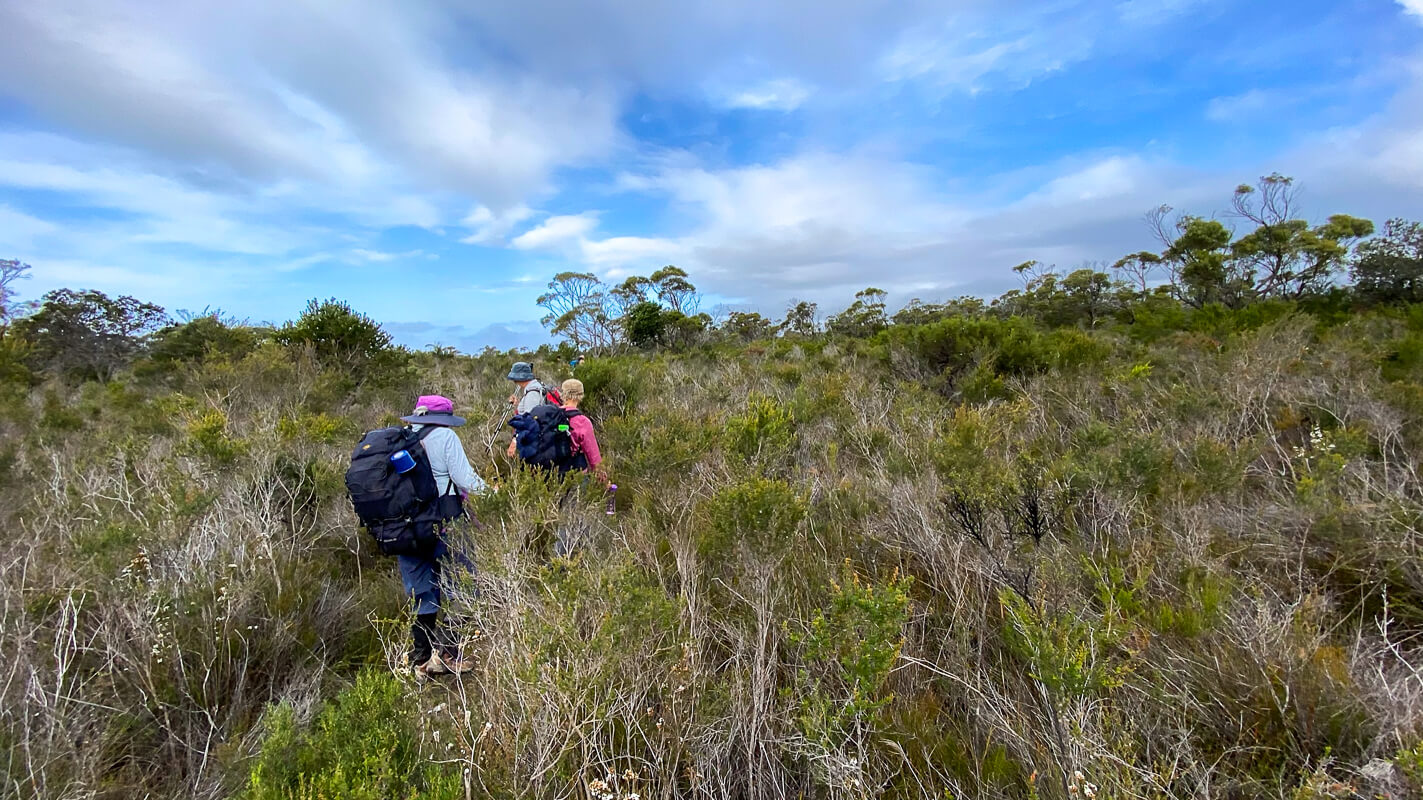
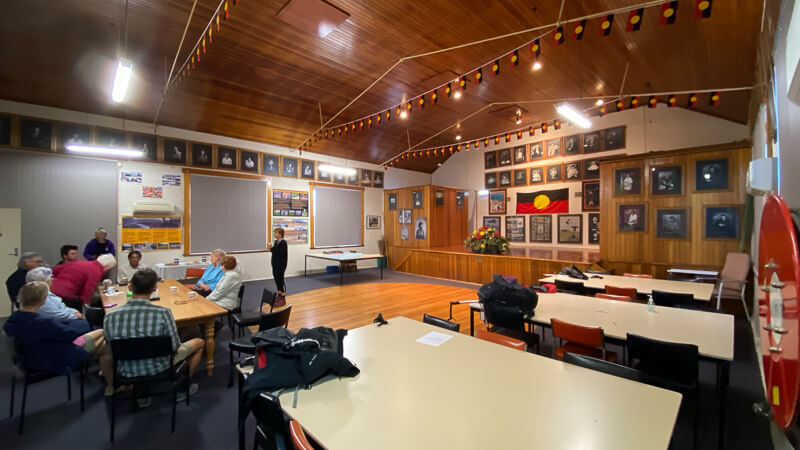
The weight of the Elders
With the architecture of a community hall and the quiet reverence of a Quaker meeting, the air vibrated with the weight of knowledge, held in the gaze of the surrounding portraits. Row upon row of eyes looked into my soul from their regal assuredness. Humble and quiet, mighty and proud.
The entire history of the palawa nation hangs heavy in this space. The knowledge of all things lutruwita (Tasmania), is an invisible fog that inhabits this place. To learn how and where to live, how to build and tear down, to become a man, a woman, a mother, father, teacher, hunter, fisher, healer – all that has come before – is not written down, in books to pass along or a web page that springs from a keyword. This knowledge comes from listening at the right time and in the right place.
This is the weight of the Elders.
I’m here because I read an article by Bob Brown in the Guardian, published in early 2019. It ends with his words,
“Returning home, I post Carleeta a shiny pink-shell Palawa necklace I had purchased from a Hobart gallery years ago. It belongs to her.”
Bob Brown, 2019
As I craned my neck to look up into the eyes of the black and white portrait photos of Elders, I didn’t know that three days from then, I’d hold that necklace in my hand.
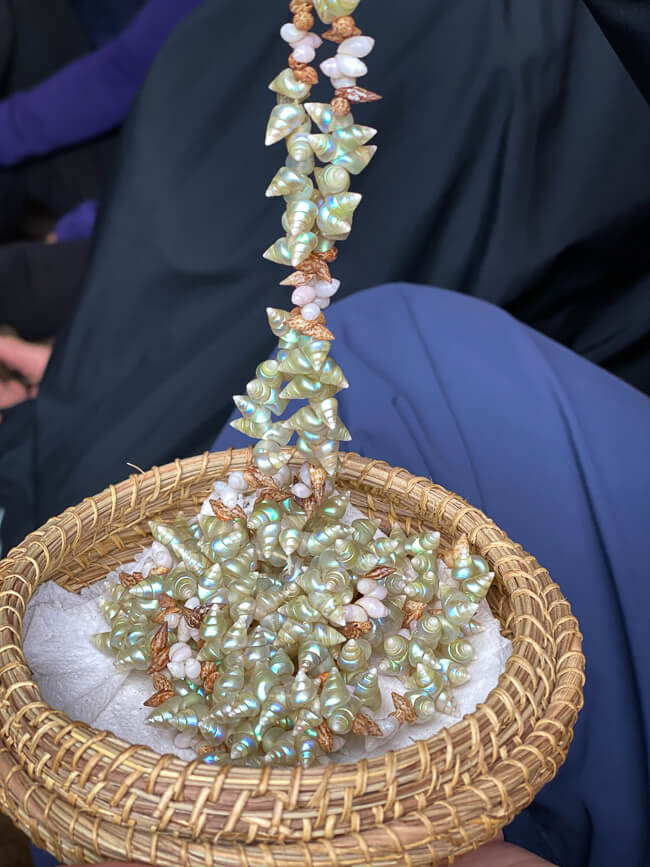

The Wukalina Walk begins
This is the start of the four day, three night, wukalina Walk. An aboriginal-owned and operated journey up and beyond Mt William (wukalina) in the north-eastern tip of Tasmania.
I’m here looking for answers and loaded with questions. Questions for my hosts and guides, questions of myself, questions of commercial walking tour operators, the industry they drive and questions of post-invasion politics and society.
Sparked by earlier research looking for tour opportunities to walk multi-day on Country with local Aboriginal guides, I knew there weren’t many – just four that I found – that were owned and operated by communities or aboriginal businesses. Two in Western Australia (Lurujarri Heritage Trail – a community walk in Broome and Black Tracks – a tour business in the Kimberly), Larapinta Culture from Alice Springs, and here, in Tasmania where I find myself now.
What I wanted to know was why. Why at a time of huge interest in guided walks across Australia, where every step we take is on someone’s Country, are the companies owned by whitefella, with profits, sway, confidence and capacity building, coming back to whitefellas.
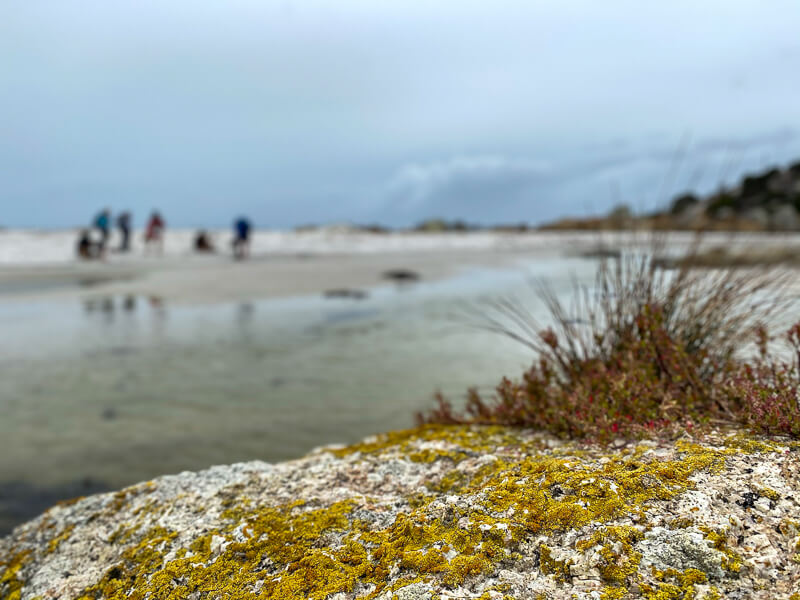
There are only 4 Aboriginal owned & operated multi-day tours in Australia
Over 4 days, I walked, sat and listened as guides Hank and Carleeta, generously answered my question of ‘why’. Their answers pointed to my own ignorance and lack of understanding of Australia’s First Nations journeys, with challenges that go deep and broad, forming a checklist of obstacles of which even half, would deter any startup.
The lack of access to capital is just the beginning and probably the first thing that comes to mind. But with wukalina there were no competitors in the market (or established knowledge of that market) that they could draw on. This type of ‘gap in the market’ is usually what makes entrepreneurs froth, but establishing a new genre, way-finding a whole new route through an unknown landscape, is hard. It takes vision, foresight, mental and physical toughness and resilience.
Without a doubt, one of the biggest revelations was drawing a line between the number of guides available to run trips and how the traditional guiding model in Australia of guides-as-nomads, travelling across the country, to fill casual employment doesn’t work for aboriginal tours.
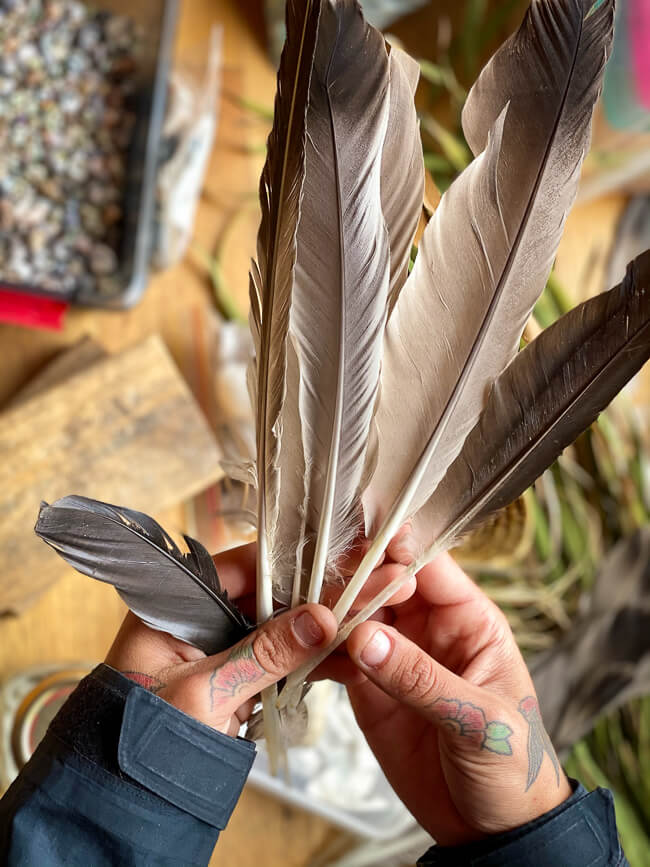
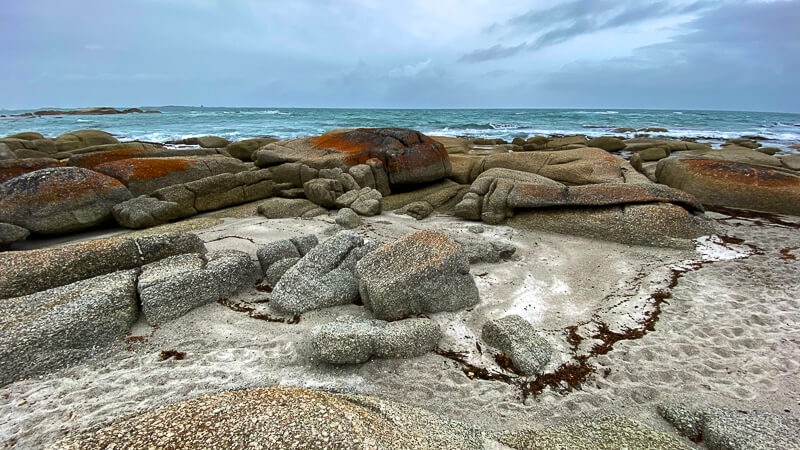
Unlike other walking tour companies
So whilst the slick branding and professional PR of the wukalina Walk might look right at home beside the big players in the Tassie walking market like Tasmanian Walking Company, Walk Into Luxury or Life’s an Adventure, peel back this outer shell and you’ll find something fundamentally different.
“We’re not in this to build big profits, we’re here to build community,” Guide Hank Horton says, over tea, scones, maps and mutton birds at the Elders Centre.
“It’s never been about profit for us. It’s about creating a business that the aboriginal community can be involved in, can be employed with and have a say in how that’s run.”
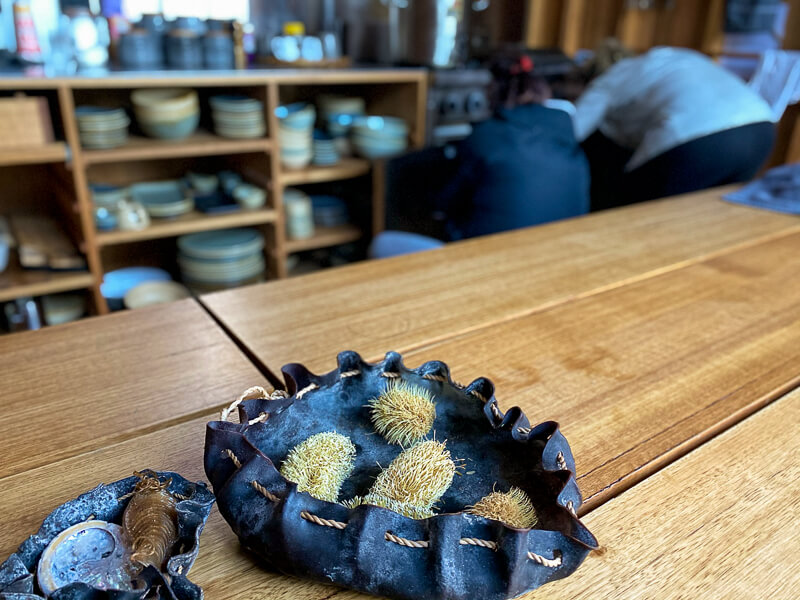
Muttonbirding season on Cape Barren Island runs from the end of March to the end of April and is central to community and connection here. This backdrop means that after being welcomed here by Elder Uncle Clyde Mansell, I’m on the last tour for the short walking season (Sep-Mar) with guides Hank, Carleeta and Ash.
“To see Aboriginal people on a Muttonbird island, is to see people in their true element. Because for a short period of 5 weeks, we are in control of our cultural destiny,” says Mansell, a force of nature, and who’s relentless work to see his vision of the wukalina Walk become a reality.
This control of cultural destiny, self-determination, capacity building and commercially sustainable model is what I’ve come to Tasmania see.
The parallel shadow of my trip, is the popular Bay of Fires Walk (with luxury lodge) operated by Tas Walking Co and (without the lodge) by Life’s An Adventure. Same national park, same stretch of coastline, roughly the same route, completely different animal.
The interp that Hank, Carleeta and Ash share isn’t something that has come from books, and whilst Hank and Carleeta have both completed the respected Cert III Tour Guide’s course at TasTAFE, they didn’t get it there either. This is their story and those of their elders. The knowledge that only comes from listening and being.

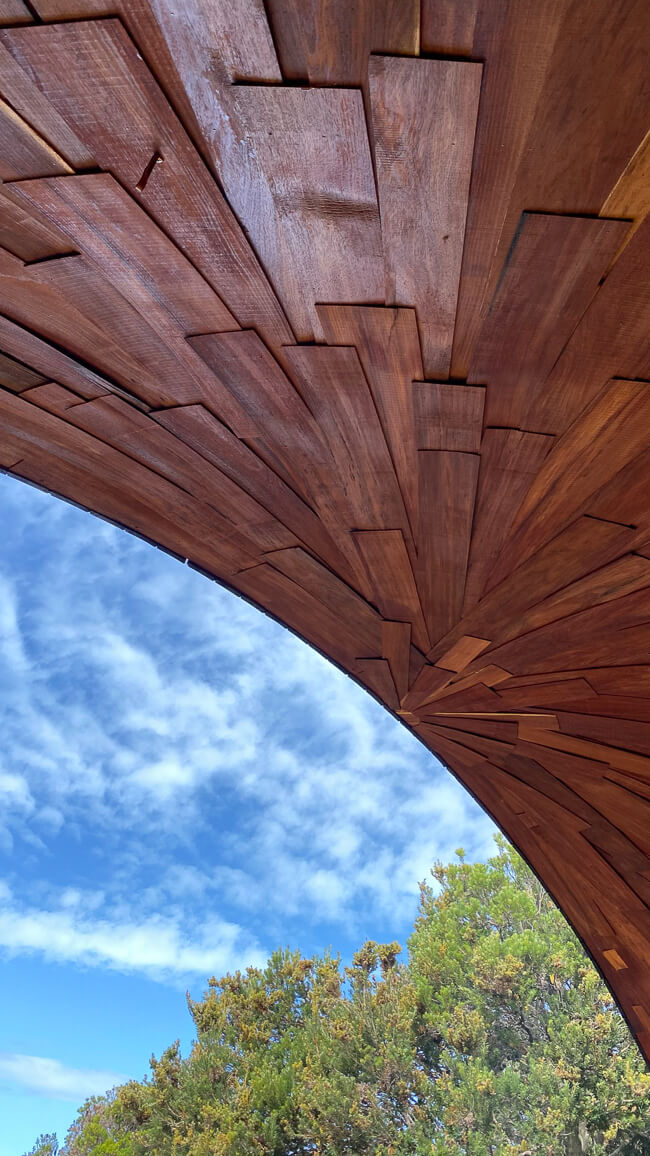
The trauma of being an aboriginal guide
Like places all around Australia, the story of Tasmania’s Aboriginals post invasion, is a traumatic one. A trauma that our guides re-live week after week in doing their jobs. To tell their stories, without the filter of making it anything other than what it was, adds a layer of complexity and difficulty on their shoulders, more than the weight of any 90L guide’s backpack ever could.
“It’s emotional for us, a lot of the stories we talk about are dredging up memories for us. We get emotional and we cry and it’s mentally draining as much as it is physically draining on us.” Hank explains.
This history isn’t necessarily 200 years old either. It was as recent as 1975 that some of Hank’s cousins were stolen; removed as part of the planned disbursement of palawa’s stolen generation.
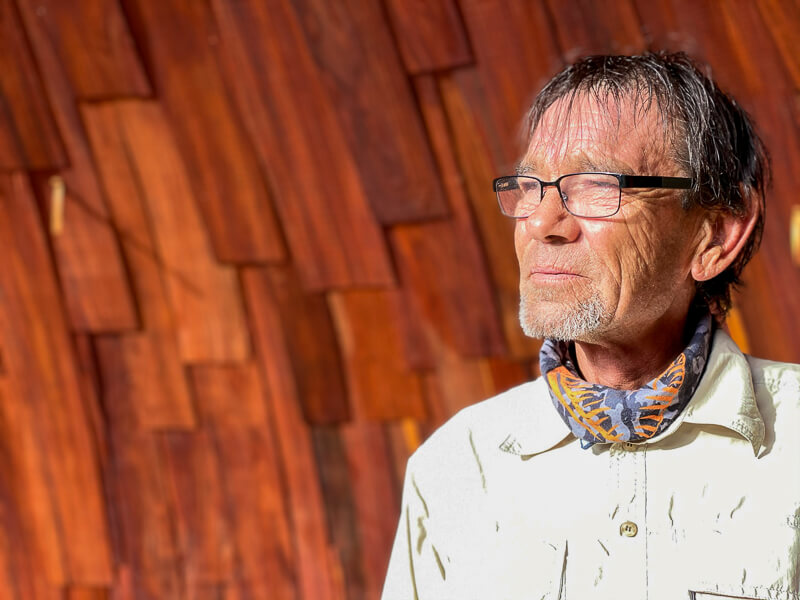
Capacity and training
“I’m so proud of these young ones coming forward,” says Hank, referring to Carleeta and Ash, “but there are only four of us, week after week, it is hard. We have to build the capacity of our guides.”
Every hiking guide in Australia knows the pay and conditions of an industry that relies on its casual workforce is not great. Most choose guiding as a lifestyle for a few years, instead of a long-term career. Travelling with the guiding seasons of summer in Tassie to winter in Central Australia provides year-round employment that wukalina never can, but it’s the stories of this place that can’t travel either.
The common tale of tour guides leaving the industry after marriage and a mortgage holds true for wukalina also, where one former guide made the hard decision to take consistent, higher wages at Woolworths.
If story belongs to place and people, capacity of storytellers isn’t something that can easily be built by enlisting outsiders.
Carleeta, the last baby born on Cape Barren Island, worked hard to get through her guiding qualification in Hobart.
“I didn’t think I was going to pass, but as soon as I had the opportunity to design a 1 hour tour, bring my TAFE group out and walk up to the summit, talking about the islands and connection to Country, that’s when they said, I passed the course.”

This training-on-Country concept led the community to support Hank through his Cert IV Trainer and Assessor’s course, with the aim to offer local community members the opportunity for a recognised qualification in guiding. The key difference being that it’s not taught by a whitefella, in a whitefella classroom, in a city 200 km from home.
Scones, stories and gear checks at the Elders Centre complete, our small group of nine walkers load onto a Coaster bus and head north along the Tamar River, before turning east towards Bridport.
Crossing Pipers River, something changes in Hank as his sharp-minded, big-picture history lesson of Tasmania slows and his shoulders relax. He’s just told us the importance of landforms as boundaries. Here, we’ve crossed into Hank’s Country.
“A lot of people would feel unsafe being out here, stuck out in the wilderness. We feel safe because it’s home. It’s like opening the backdoor and walking into your home.”
Hank, Head Guide
By crossing the river with Hank, we’ve done something that no other Bay of Fires walking tour can do; we’ve come in through the familiar swing of a backdoor, to feel welcomed and safe.
Carleeta explains, “It is more of a journey than a tour. We want our guests to feel that they are a part of our family and community.”
“We don’t do a regimented thing or any forced marches. Our interps will come quite often from our stories or our connection with Country, or animal.”
That gentle, connected approach informs the pace that we walk at and is dictated by the thoughtful and respectful, ‘spider waltz’, that young guide in training, Ash, performs at the head. With a stick in hand, he mindfully and calmly moves the spider webs from across the tunnel of track that leads us through the melaleuca scrub.
“When we’re getting bush foods, it’s not just about picking that plant or taking that animal, there’s a spiritual connection to that.”
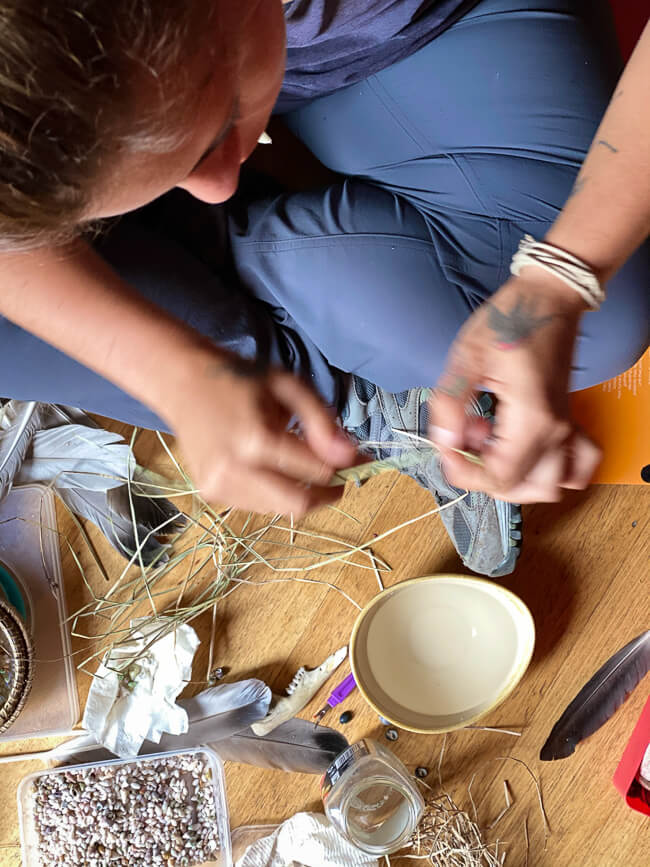
Gaining confidence
Public speaking takes guts. Sharing your own story and opening yourself up to criticism, within the experience of Aboriginal people, is a fear that many potential guides face.
Hank explains, “Self-doubting because they’ve been told for bloody years that we’re dumb blackfellas that can’t do anything. That does rub off.”
Day 2 of the wukalina journey and it’s Carleeta’s time to shine. As she leads our group along the beach to a significant ‘Cultural Living Site’, explaining that the term midden is gaelic for rubbish heap, it’s hard to see a trace of the shyness and lack of self-confidence she says she had before joining the wukalina team.
“I never used to talk in front of people. I had a stutter up until I was about 16. Once you feel comfortable and know what you’re talking about, you definitely become more confident in yourself. Since doing this, I’ve been able to become more grounded and centred.” Carleeta hopes to mentor other young guides. It wouldn’t surprise me if in years to come, she is known as Auntie Carleeta.
Having the confidence to speak your story is one thing, starting a business and trusting it can be sustained through challenges and realities, whilst standing up to scrutiny, is another.
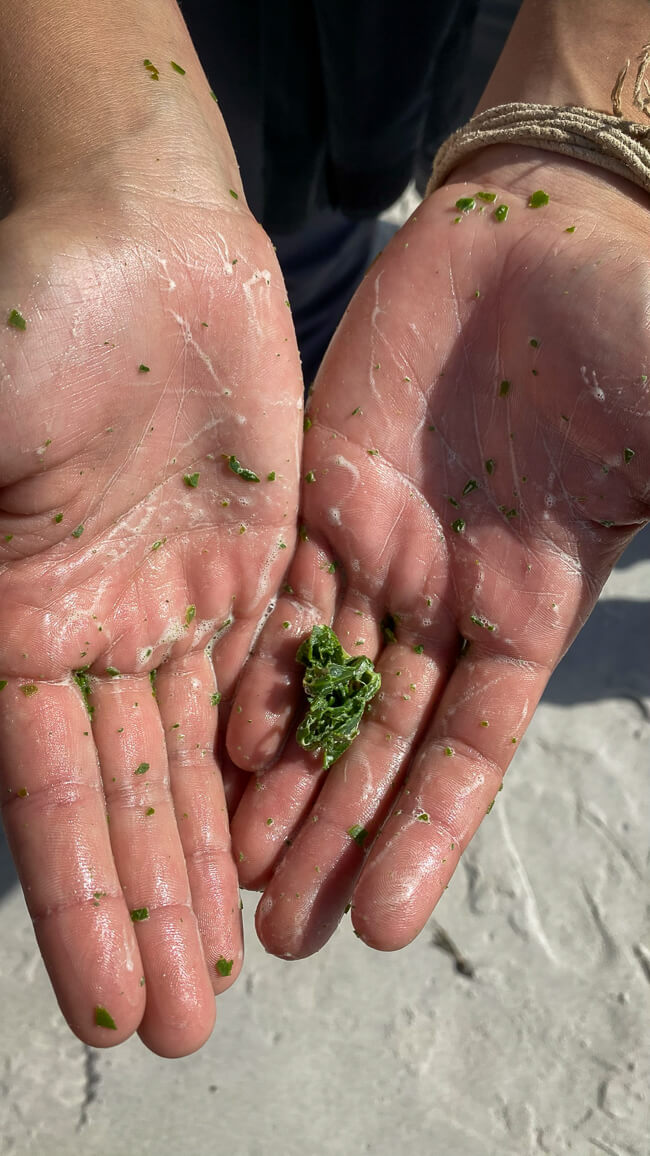
Scrutiny and pressure
The more the East Coast air fills my lungs, the more I share meals around the communal table, cooked by members of the community, I realise the lurking answer to the question I came here with. Running a tourism business anywhere is hard. Running an Aboriginal tourism business is even harder. The layers of extra complexity and challenge stretch beyond the logistics of people and place, to include levels of scrutiny from government and industry that appears above a level that is directed at a non-aboriginal enterprise.
“We make 1 little mistake and the whole of the government and community would be over us like a ton of bricks.”
When traditional tourism and government power brokers offer their opinions as a solution to some of the challenges, as ‘Why don’t you just sell to Tas Walking Company?’, they show their cards in a way best summed up by Hank:
“Whitefella sees Country as what value they can get out of it, we see it as our survival.”
“It took Uncle Clyde 15 years and three Tasmanian premiers to get it through. He was a dog with a bone… [his] thinking was if we can show the government that if you give us back the right parcel of land, we can turn it into a community business or community experience.”
“… we are now a glowing example to the broader community, to show that these blackfellas can do this and are quite capable of running a business and managing their Country.”
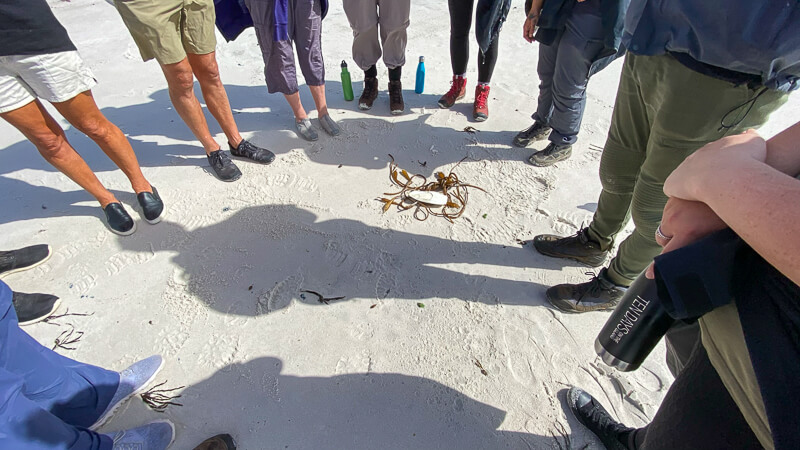
Finances and skills
Developing any idea into a viable business or tourism product takes money, time and skill. The wukalina journey was kicked off with philanthropic funding and good relationships with some influential Tasmanian business owners, who shared Mansell’s enthusiasm and could see the potential.
For many remote aboriginal communities, even having the skill-set to write submissions is a challenge, let alone having the funds to pay a consultant to do it for them. How do they even start?
Once the wheel was in motion, with interest from the private sector, Uncle Clyde was able to leverage government funding as momentum built.
krakani lumi (resting place) is well hidden amongst the sand dunes, boulders and coastal scrub of banksia and grass trees. These award-winning, pre-fab standing camp structures provide shelter in the truest sense of the word, with their timber domes reaching around you, to embrace and welcome you.
Until you round a large banksia and are standing in front of them, you have no clue how far you are from the goal for the day – you just keep walking through the scrub to a hidden, beautiful, resting place. This mystery of the hidden goal feels akin to the future of Aboriginal owned tourism in Australia. Hidden, beautiful, surprising, sustainable and completely at home.
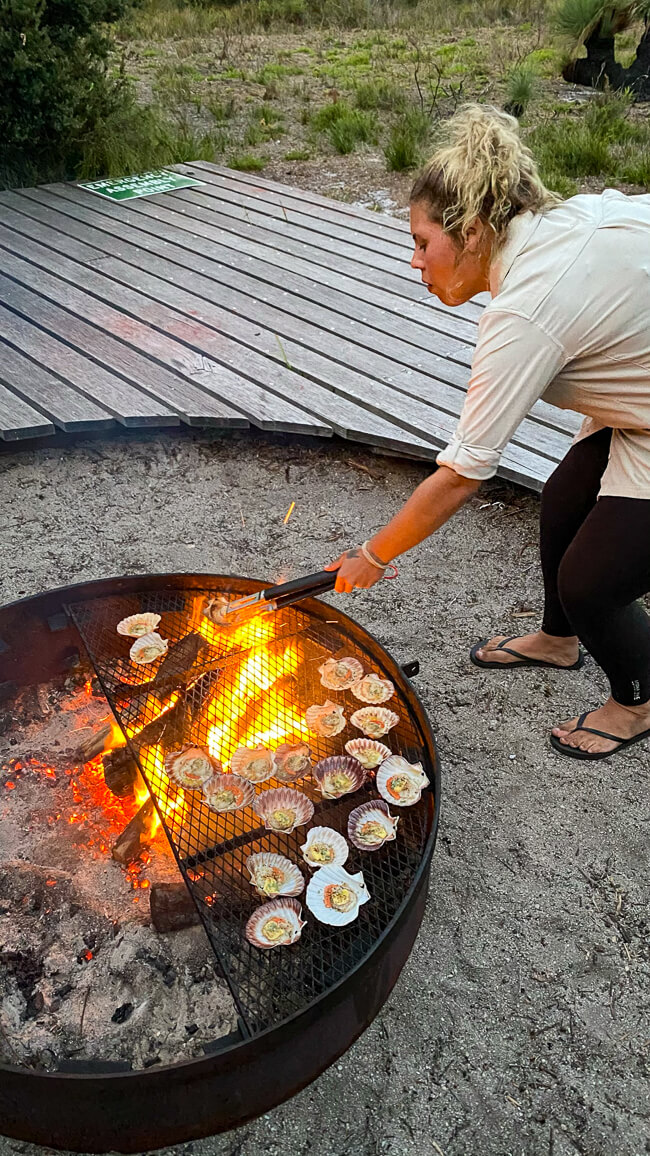
With many community groups seeing the impacts of mass tourism at Uluru and Kakadu and an understanding of the challenges involved, there’s a wise reluctance to jump on the tour bus bandwagon.
“Our community are confident that we’re doing a sensible business activity on our Country, but we do it in a very spiritual and respectful way.”
Hank is optimistic, “I’ve been talking to the old fellas over at Kakadu way and they’re using us as an example up there. They’re saying, ‘look what all those young mobs are doing down there in Tassie’? It’s pretty good when they use us as an example, because we’ve been using them as an example for years.”
Learning is what wukalina is all about. Sitting in a circle, Carleeta teaches us about shell jewellery and hands us a standout example of a traditional shell necklace, pearlescent and radiant. The weight of the piece (a returned artefact – a gift from Bob Brown) reflects the precious gift that these 4 days have been.
A version of this story first appeared in Wild Magazine.
